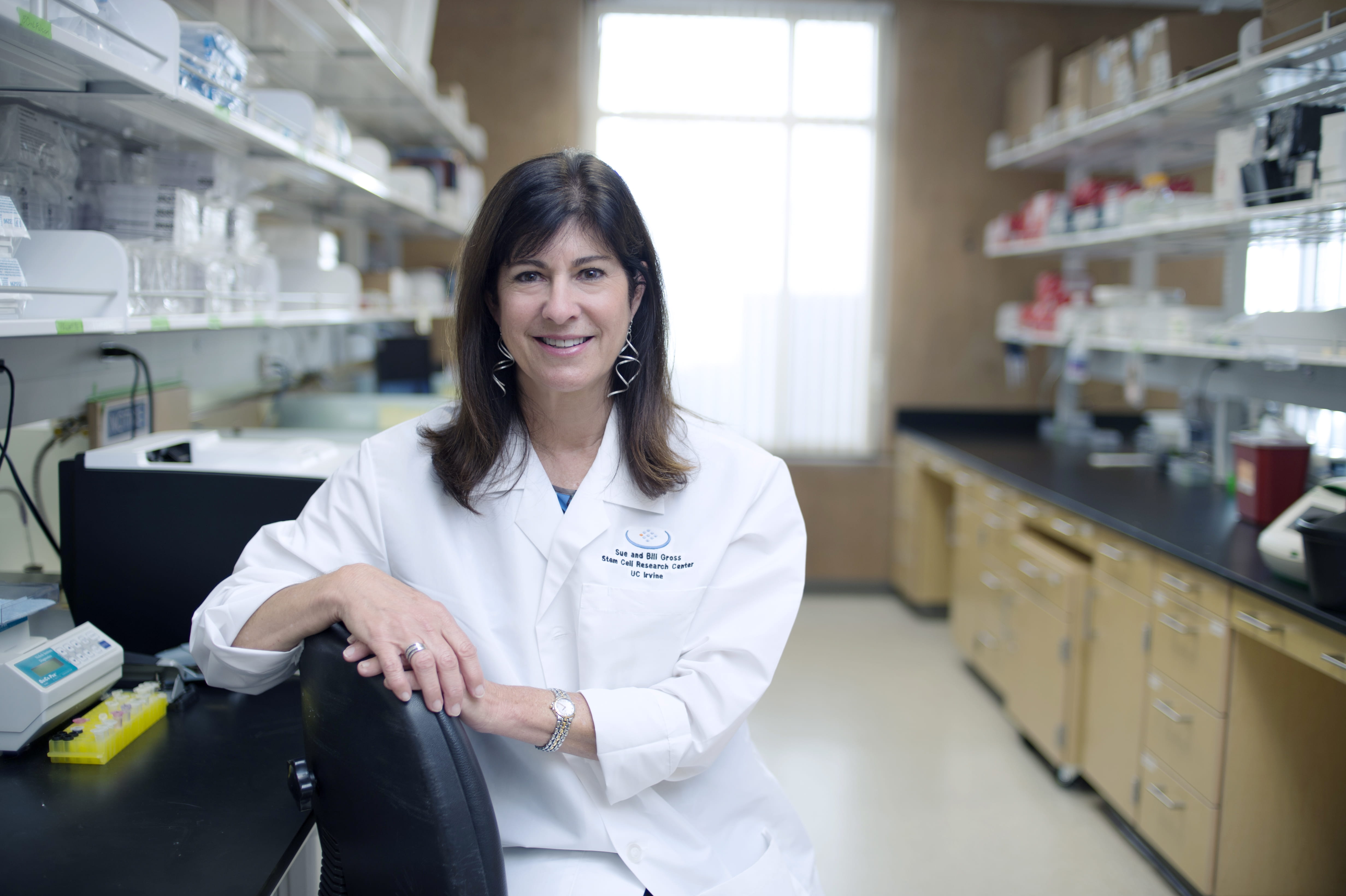Basis of ‘leaky’ brain blood vessels in Huntington’s disease identified
UCI-led stem cell study points to new treatments for this fatal disorder

Irvine, Calif., May 16, 2017 — By using induced pluripotent stem cells to create endothelial cells that line blood vessels in the brain for the first time for a neurodegenerative disease, University of California, Irvine neurobiologists and colleagues have learned why Huntington’s disease patients have defects in the blood-brain barrier that contribute to the symptoms of this fatal disorder.
“Now we know there are internal problems with blood vessels in the brain,” said study leader Leslie Thompson, UCI professor of psychiatry & human behavior and neurobiology & behavior. “This discovery can be used for possible future treatments to seal the leaky blood vessels themselves and to evaluate drug delivery to patients with HD.”
The blood-brain barrier protects the brain from harmful molecules and proteins. It has been established that in Huntington’s and other neurodegenerative diseases there are defects in this barrier adding to HD symptoms. What was not known was whether these defects come from the cells that constitute the barrier or are secondary effects from other brain cells.
To answer that, Thompson and colleagues from UCI, Columbia University, the Massachusetts Institute of Technology and Cedars-Sinai Medical Center reprogrammed cells from HD patients into induced pluripotent stem cells, then differentiated them into brain microvascular endothelial cells – those that form the internal lining of blood vessels and prevent leakage of blood proteins and immune cells.
The researchers discovered that blood vessels in the brains of HD patients become abnormal due to the presence of the mutated Huntingtin protein, the hallmark molecule linked to the disease. As a result, these blood vessels have a diminished capacity to form new blood vessels and are leaky compared to those derived from control patients.
The chronic production of the mutant Huntingtin protein in the blood vessel cells causes other genes within the cells to be abnormally expressed, which in turn disrupts their normal functions, such as creating new vessels, maintaining an appropriate barrier to outside molecules, and eliminating harmful substances that may enter the brain.
In addition, by conducting in-depth analyses of the altered gene expression patterns in these cells, the study team identified a key signaling pathway known as the Wnt that helps explain why these defects occur. In the healthy brain, this pathway plays an important role in forming and preserving the blood-brain barrier. The researchers showed that most of the defects in HD patients’ blood vessels can be prevented when the vessels are exposed to a compound (XAV939) that inhibits the activity of the Wnt pathway.
This is the first induced pluripotent stem cell-based model of the blood-brain barrier for a neurodegenerative disease. The study appears in the journal Cell Reports, with a parallel study from Cedars-Sinai Medical Center in Cell Stem Cell that advances the first model for a neurodevelopmental disease that specifically affects the blood-brain barrier.
“These studies together demonstrate the incredible power of iPSCs to help us more fully understand human disease and identify the underlying causes of cellular processes that are altered,” said Ryan Lim, a postgraduate research scientist at the Institute for Memory Impairments and Neurological Disorders, or UCI MIND, who initiated the UCI work.
“We show a proof-of-concept therapy where we could reverse some of the abnormalities in the blood vessel cells by treating them with a drug,” added Thompson, who is affiliated with both UCI MIND and the Sue & Bill Gross Stem Cell Research Center.
“The future direction of this study is to develop ways to test how drugs may be delivered to the brain of HD patients and to examine additional treatment strategies using our understanding of the underlying causes of abnormalities in brain blood vessels,” said study co-leader Dritan Agalliu, assistant professor of pathology & cell biology at Columbia University Medical Center.
Chris Quan, Andrea M. Reyes-Ortiz, Jie Wu, Jennifer Stocksdale and Malcolm S. Casale of UCI; Amanda J. Kedaigle, Theresa A. Gipson, Ernest Fraenkel and David E. Housman of MIT; Gad D. Vatine and Clive N. Svendsen of Cedars-Sinai; and Sarah E. Lutz of Columbia University also contributed to the study, which was supported in part by the American Heart Association, California Institute for Regenerative Medicine and National Institutes of Health.
About the University of California, Irvine: Founded in 1965, UCI is the youngest member of the prestigious Association of American Universities. The campus has produced three Nobel laureates and is known for its academic achievement, premier research, innovation and anteater mascot. Led by Chancellor Howard Gillman, UCI has more than 30,000 students and offers 192 degree programs. It’s located in one of the world’s safest and most economically vibrant communities and is Orange County’s second-largest employer, contributing $5 billion annually to the local economy. For more on UCI, visit www.uci.edu.
Media access: Radio programs/stations may, for a fee, use an on-campus ISDN line to interview UCI faculty and experts, subject to availability and university approval. For more UCI news, visit wp.communications.uci.edu. Additional resources for journalists may be found at communications.uci.edu/for-journalists.